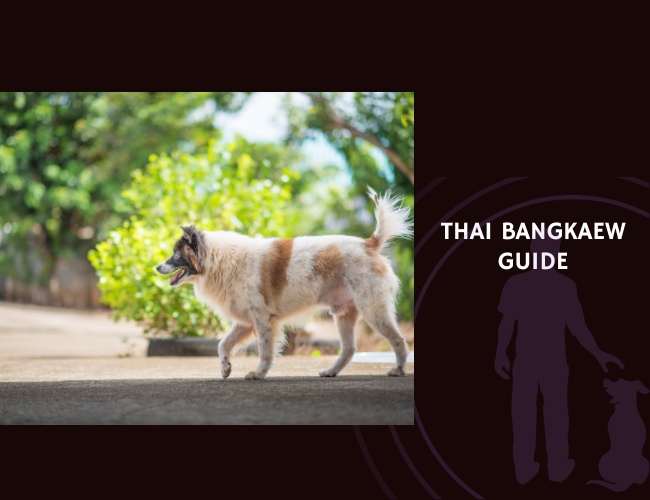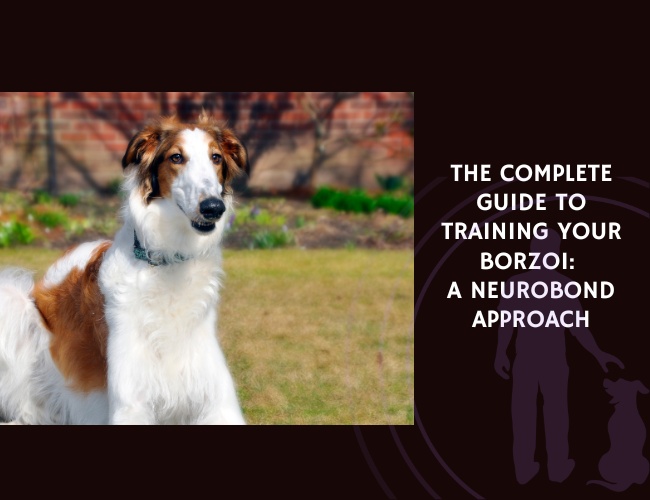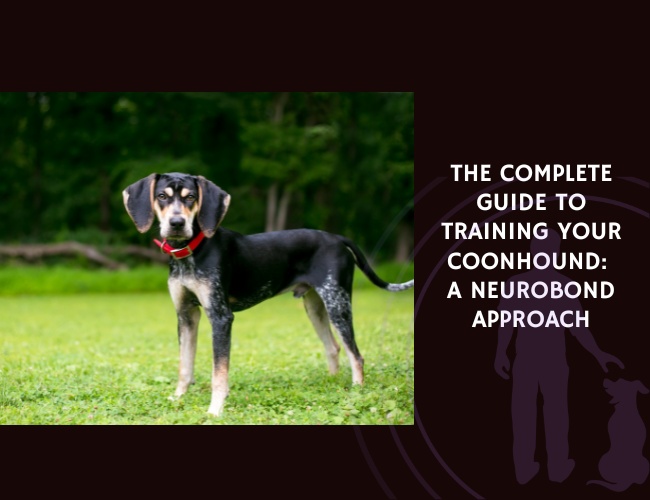Introduction: A Living Legend from the Heart of Thailand
Picture this: a century ago in the remote village of Bangkaew, nestled in the Bang Rakam District of Phitsanulok Province in central Thailand, surrounded by floodwaters that created a natural island, a Buddhist monk’s act of compassion would give birth to one of the world’s most fascinating dog breeds. The story begins with Luang Puh Maak Metharee, the third abbot of Wat Bangkaew temple, a man known throughout the region for his boundless compassion toward all living creatures. When a local villager brought him a pregnant black and white female dog, the monk couldn’t have imagined he was about to become the guardian of canine history.
The seasonal floods that year had transformed the temple grounds into an isolated sanctuary, creating natural barriers that would prove crucial to our story. With no male dogs able to reach the temple through the floodwaters, nature orchestrated something extraordinary. The villagers whispered of sightings – a wild creature moving through the shadows at the edge of the forest, neither fully dog nor completely wild. Some spoke of the golden jackal (Canis aureus), others of the dhole (Cuon alpinus), those elusive wild dogs that once roamed Thailand’s forests freely. When the female’s puppies were born, their appearance told a story that science would take decades to confirm.
The Sacred Ground of Wat Bangkaew
The monastery of Wat Bangkaew wasn’t just any temple – it was a place where the boundary between the civilized and wild worlds naturally blurred. Located where the Yom River’s flooding patterns created seasonal isolation, the temple grounds became an inadvertent sanctuary for various wildlife. Luang Puh Maak’s philosophy of universal compassion meant that all creatures found refuge there, from the smallest insects to the wild animals that ventured from the surrounding forests.
This unique environment – part spiritual sanctuary, part natural preserve – created the perfect conditions for an unprecedented genetic event. The isolation wasn’t just geographical; it was temporal, lasting long enough for nature to write a new chapter in canine evolution. The monk’s kindness had provided the stage, the floods had set the scene, and the wild blood that entered the gene pool would create something entirely new.
When you first encounter a Thai Bangkaew, you might notice their piercing, intelligent gaze that seems to assess everything around them – a gaze that carries the wisdom of temple grounds and the alertness of the wild. This isn’t your typical family dog wagging its tail at every passerby. No, this is a breed that embodies the protective spirit of ancient temple guardians, the independence of their wild ancestors, and the fierce loyalty that has made them legendary throughout Thailand.
From Temple Grounds to National Treasure
Since 1957, dedicated breeders have carefully maintained and refined the breed while preserving those unique characteristics that emerged from that fateful meeting of domestic and wild. The geographical isolation of the Bang Rakam District helped maintain the breed’s purity for decades, with the Yom River’s flooding patterns continuing to create natural boundaries that prevented random crossbreeding.
The breed remained relatively unknown outside their native region until 2014, when a Thai Bangkaew made national headlines by successfully preventing a robbery at a famous Thai actor’s home. Suddenly, Thailand realized it had been harboring a treasure in the villages of Phitsanulok. The dog’s fearless confrontation with armed intruders, its strategic intelligence in alerting the household, and its refusal to back down despite danger captured the nation’s imagination. This wasn’t just a guard dog – this was a guardian in the truest sense.
Modern chromosome studies have confirmed what the villagers of Bangkaew suspected all along – these dogs carry jackal DNA, making them one of the few documented domestic dog-wild canid hybrids in existence. The scientific validation came as no surprise to those who had lived alongside these remarkable animals for generations. They had always known there was something different about the dogs from Wat Bangkaew, something that set them apart from every other breed in Thailand.
The Living Legacy of Luang Puh Maak
Today, when you walk through the village of Bangkaew, you can still feel the presence of this history. The Wat Bangkaew temple stands as it has for over a century, and locals will proudly tell you the story of their dogs’ origin. They’ll point to the spot where Luang Puh Maak’s dwelling once stood, describe how the floods used to isolate the temple for weeks at a time, and share photographs of the earliest known Bangkaew dogs – powerful, alert animals with that unmistakable wild glint in their eyes.
The breed gained international recognition when the FCI (Fédération Cynologique Internationale) officially accepted the Thai Bangkaew Dog on a definitive basis in 2022. This acknowledgment on the world stage represents not just recognition of a breed, but validation of a century of careful preservation by the people of Phitsanulok Province. Every Thai Bangkaew alive today carries within their genes the story of that flooded temple, that compassionate monk, and that wild visitor who left an indelible mark on canine history.
Let us guide you through understanding this remarkable breed, from their complex behavioral patterns rooted in both temple guardian tradition and wild survival instincts to their specific care needs shaped by generations in rural Thailand. Whether you’re considering bringing a Thai Bangkaew into your life or simply fascinated by this unique breed, you’ll discover why these dogs require not just an owner, but a true partner who understands their exceptional nature. In every Bangkaew’s protective bark, you’ll hear echoes of temple bells; in their independent spirit, you’ll glimpse the wild forests of Thailand; and in their fierce loyalty, you’ll experience the same devotion that once protected Buddhist monasteries from harm. 🐾
Character & Behavior: The Guardian’s Heart
Understanding Your Thai Bangkaew’s Protective Nature
The protective instincts of a Thai Bangkaew run deeper than simple training – they’re woven into the very fabric of their being. You’ll find that your Bangkaew doesn’t just guard your home; they create an invisible perimeter around everything they consider theirs, including you. This territorial behavior manifests in fascinating ways that might surprise even experienced dog owners.
Natural Guardian Behaviors You’ll Observe:
- Your Bangkaew will position themselves strategically in your home, often choosing vantage points where they can monitor multiple entry points
- They’ll develop different barks for different situations – a sharp, loud alarm for strangers versus a lower, more threatening growl for perceived threats
- Unlike breeds that attack first, Thai Bangkaews prefer intimidation, using their impressive presence and voice to ward off intruders
What makes this breed particularly valued in rural Thailand is their effectiveness against snakes – a critical skill where venomous species like kraits and cobras pose daily threats. Your Bangkaew’s quick reflexes and fearless nature, inherited from their wild ancestors, make them exceptional at detecting and eliminating these dangers before they can harm your family.
The Complex Social Dynamics of Pack Life
Living with a Thai Bangkaew means understanding their unique interpretation of family dynamics. These dogs don’t just live with you – they integrate into your family structure with their own understanding of hierarchy and belonging. You might notice your Bangkaew forming particularly strong bonds with one family member while still maintaining affectionate relationships with others.
The challenge comes when introducing your Bangkaew to the broader social world. Their natural wariness of strangers isn’t fear – it’s calculated assessment. Every new person entering your space undergoes silent evaluation, and your dog won’t easily change their initial judgment. This means you’ll need to actively manage social situations, teaching friends and visitors how to interact appropriately with your protective companion.
Multi-Pet Household Realities: When it comes to other animals, the Thai Bangkaew’s wild heritage becomes particularly apparent. Their prey drive, inherited from jackal ancestors, makes them incompatible with small pets. You might think early socialization will overcome these instincts, but even the best-socialized Bangkaew may suddenly see your neighbor’s cat as prey rather than a friend. Same-sex aggression is particularly pronounced, making careful consideration essential if you’re thinking of adding another dog to your household.
Cognitive Abilities: The Independent Thinker
Your Thai Bangkaew’s intelligence might simultaneously delight and frustrate you. These dogs possess remarkable problem-solving abilities and environmental awareness that surpasses many other breeds. You’ll witness your dog making autonomous decisions, sometimes choosing the solution they prefer over the one you’ve taught them. This isn’t defiance in the traditional sense – it’s the manifestation of a mind that evaluates options and selects what it deems most logical, regardless of your preferences.
The Jackal Legacy in Modern Problem-Solving
This independent thinking stems from their unique genetic heritage. Wild canids must make split-second survival decisions, and this capability remains strong in the Thai Bangkaew. In the wild, hesitation means death, and waiting for instructions isn’t an option. Your Bangkaew carries this decision-making autonomy in their DNA, expressing it in ways that might leave you both impressed and exasperated.
You might find your dog has figured out how to open gates – not just simple latches, but complex mechanisms that would challenge some humans. They’ll study your routine, identifying the precise moment when you’re distracted enough for them to execute their plans. Some owners report their Bangkaews learning to open door handles, manipulate sliding bolts, and even coordinate escape attempts when multiple dogs are involved. One particularly clever individual was known to move furniture to create stepping stones to reach high windows.
Environmental Awareness and Tactical Thinking
The environmental awareness of a Thai Bangkaew borders on uncanny. They’ll notice changes in your neighborhood that you’ve completely missed – a new dog three blocks away, a relocated garbage can, or a different delivery person on a familiar route. This hypervigilance isn’t anxiety; it’s tactical assessment. Your dog maintains a mental map of their territory, constantly updating it with new information.
Watch your Bangkaew during walks, and you’ll notice they’re not just walking – they’re patrolling. They’ll check specific points, investigate particular corners, and mark strategic locations. They remember where they encountered threats before and approach these areas with additional caution. This spatial intelligence means they can navigate complex environments, find alternative routes when blocked, and even lead you home if you become disoriented.
You might observe your Bangkaew demonstrating what researchers call “means-end reasoning” – the ability to use tools or intermediate steps to achieve goals. They’ll drag their bed to a sunny spot, position chairs to create vantage points, or use toys to knock down items they can’t directly reach. This isn’t simple trial and error; it’s deliberate problem-solving that shows understanding of cause and effect.
Memory and Learning Patterns
The Thai Bangkaew’s memory capabilities often surprise even experienced dog owners. They’ll remember people they met once years ago, holding grudges against those who wronged them and greeting long-absent friends with recognition. This extended memory affects training significantly – a harsh correction might be remembered indefinitely, affecting your relationship long-term.
Their learning style differs from more biddable breeds. While a Golden Retriever might repeat a behavior endlessly for praise, your Bangkaew questions the purpose. They’ll learn a command quickly, demonstrate they understand it, then decide whether it’s worth performing based on context. You might teach “stay” perfectly in your living room, only to have your dog completely ignore it outdoors where they deem movement necessary for security.
This selective compliance isn’t stupidity or stubbornness in the traditional sense – it’s evaluation. Your Bangkaew weighs the reward against the effort, considers environmental factors, and makes a decision. They’re particularly adept at cost-benefit analysis, often choosing the option that provides maximum reward for minimum effort, even if it’s not what you requested.
The Digging Imperative: Understanding an Untrainable Instinct
The digging behavior deserves special mention – it’s not a habit you can train away. Your Bangkaew will dig. This isn’t a behavioral problem to solve; it’s a fundamental expression of their nature, as integral to their being as barking or tail wagging. Understanding why they dig helps you manage rather than eliminate this behavior.
They’ll create cooling pits in summer, sophisticated excavations that utilize soil’s thermal properties. Watch closely, and you’ll notice they choose specific locations – under shade, where soil remains moist, or where underground water creates natural cooling. These aren’t random holes; they’re engineered comfort zones that demonstrate understanding of thermodynamics.
Hunting excavations reveal another aspect of their intelligence. Your Bangkaew can detect underground movement through vibrations and scent, pinpointing the location of moles, voles, or insects with remarkable accuracy. They’ll dig with purpose, adjusting their technique based on soil type and prey depth. Some individuals develop specialized techniques for different quarry, using shallow scraping for insects versus deep tunneling for rodents.
Sometimes they dig simply because the earth calls to them – an ancestral memory of den creation, cache hiding, or territory marking. You might find your Bangkaew digging in the same spot repeatedly, creating a permanent excavation they return to for comfort. Rather than fighting this instinct, you’ll find more success in providing designated digging areas and protecting the parts of your garden you value most.
Problem-Solving Creativity and Adaptive Intelligence
The creativity your Thai Bangkaew displays in problem-solving often defies conventional canine expectations. They don’t just learn solutions; they innovate them. Faced with a puzzle toy designed for dogs, they might ignore the intended solution and create their own method – perhaps destroying the toy to access treats rather than following the designed mechanism.
This adaptive intelligence means they quickly learn to manipulate their environment and the humans within it. Your Bangkaew will identify your weaknesses and exploit them skillfully. They know exactly which whine makes you check on them, which look earns extra treats, and which behaviors guarantee attention, even if it’s negative. They’re master manipulators who understand human psychology better than many humans understand theirs.
You’ll notice they develop unique solutions to common problems. Can’t reach the counter? They’ll open lower cabinets to create steps. Door closed? They’ll go through windows. Fence too high? They’ll dig under or find the one weak spot you didn’t know existed. Each solution demonstrates not just intelligence but creativity – the ability to approach problems from unexpected angles.
Working With, Not Against, Their Intelligence
Living successfully with this level of intelligence requires adjusting your expectations and methods. Traditional obedience training often fails because it doesn’t engage their problem-solving nature. Instead, you’ll find success with training that incorporates choice and reasoning. Rather than demanding blind compliance, explain through consequence and reward why certain behaviors benefit them.
Puzzle feeders, scent work, and complex training challenges satisfy their mental needs better than repetitive obedience drills. Hide treats in increasingly difficult locations, create obstacle courses that require planning to navigate, or teach complex behavior chains that demand memory and sequencing. The more you challenge their intelligence, the more engaged and manageable they become.
Remember that this intelligence comes with emotional complexity. Your Bangkaew can experience boredom, frustration, and even what appears to be spite. They’ll remember unfair treatment, recognize inconsistency, and absolutely judge you for your mistakes. This emotional intelligence means they need not just physical exercise but mental stimulation and emotional consideration.
The key to living with a Thai Bangkaew’s intelligence is respecting it. These aren’t robots to program but thinking beings to partner with. Once you understand that your dog is constantly analyzing, evaluating, and deciding, you can work with their nature rather than against it. You’ll find yourself not training a dog in the traditional sense, but negotiating with an intelligent being who has their own opinions, preferences, and remarkably clever ways of achieving their goals.

Training & Education: Building Partnership, Not Just Obedience
The Critical Window: Early Socialization Strategies
The period between 8 and 16 weeks in your Thai Bangkaew puppy’s life will largely determine their adult temperament. During this critical window, every positive experience with strangers, children, and other animals creates neural pathways that can moderate their natural wariness. You’re not trying to eliminate their protective instincts – that would be impossible and undesirable. Instead, you’re teaching them discrimination.
Start with brief, controlled exposures. Perhaps a friendly neighbor offers treats from a distance, or you sit with your puppy outside a café, watching the world go by. Each calm, positive experience builds your puppy’s confidence and teaches them that not every stranger represents a threat. But remember – forcing interactions when your puppy shows stress will backfire, potentially creating lifelong fears.
Effective Socialization Protocol:
- Week 8-10: Focus on household sounds, surfaces, and family members
- Week 10-12: Introduce trusted friends, one at a time, in controlled settings
- Week 12-14: Brief public outings to low-stress environments
- Week 14-16: Gradually increase complexity of social situations
- Beyond 16 weeks: Continue reinforcing positive associations throughout adolescence
You might notice that even with excellent socialization, your Bangkaew maintains their discerning nature. This is normal and actually desirable – you want a dog who can differentiate between friend and potential threat, not one who blindly trusts everyone.
Mastering the Art of Motivation
Training a Thai Bangkaew requires you to think less like a traditional dog trainer and more like a negotiator. These dogs understand commands perfectly well – they simply choose when to comply. Your challenge isn’t teaching them what “sit” means; it’s convincing them that sitting right now benefits them.
The key lies in keeping training sessions short, varied, and rewarding. Five minutes of engaged training beats thirty minutes of repetitive drills that bore your intelligent companion. You’ll find more success with three brief sessions throughout the day than one long training marathon. Each session should feel like a game rather than work.
High-value rewards become your secret weapon. Discover what truly motivates your individual dog – it might be special treats, enthusiastic praise, or a favorite toy. Some Bangkaews respond best to food rewards, while others prefer play or adventure as their prize. Once you identify their currency, use it strategically to reinforce the behaviors you want.
Channeling the Guardian Instinct
Your Thai Bangkaew’s protective drive isn’t something to suppress – it’s a gift to channel appropriately. Teaching your dog when and how to protect requires establishing yourself as the decision-maker while respecting their natural instincts.
Start by teaching a “friend” command that signals when visitors are welcome. This doesn’t mean your dog will suddenly love strangers, but it teaches them to defer to your judgment. Practice this with known friends first, rewarding calm, non-aggressive behavior. Your Bangkaew learns that you decide who belongs and who doesn’t.
The “quiet” command becomes essential for urban living. Your dog will alert you to everything – that’s their job. Your task is teaching them that one or two barks sufficiently notify you, and then they should wait for your response. This preserves their guardian role while preventing the excessive barking that strains neighbor relations.
Nutritional Excellence: Fueling Your Athletic Guardian
Optimizing Macronutrients for Peak Performance
Your Thai Bangkaew’s nutritional needs reflect their active, athletic nature. These dogs require quality protein sources to maintain their muscular build and support their high energy levels. You’re looking at a minimum of 22.5% protein for growing puppies and 18-25% for adults, though active individuals may benefit from even higher levels.
The protein sources matter as much as the percentage. High-quality animal proteins like chicken, fish, and lamb provide complete amino acid profiles that support muscle maintenance and immune function. You might notice your Bangkaew thrives on varied protein sources – this reflects their ancestral diet versatility.
Fat requirements deserve special attention. Your Bangkaew’s beautiful double coat and high activity level demand adequate fat intake, typically 12-15% for average activity or 15-20% for very active dogs. These fats aren’t just about energy – they’re crucial for cognitive function, especially important for such an intelligent breed.
Carbohydrates should remain moderate, around 30-40% maximum. Your Thai Bangkaew’s wild heritage means they process proteins and fats more efficiently than heavy carbohydrate loads. Too many carbs can lead to weight gain, particularly problematic for a breed prone to joint issues.
Fierce. Loyal. Untamed.
Guardians by design. The Thai Bangkaew’s constant vigilance and measured threat response reflect centuries of blending domestic loyalty with wild precision. Their presence alone is often enough to deter, but their instincts are always ready to act.
Bonded to the pack. These dogs weave themselves into family structure with intense devotion, protecting loved ones while instinctively navigating hierarchy. Their loyalty is deep, but it comes with firm boundaries and respect for their independence.
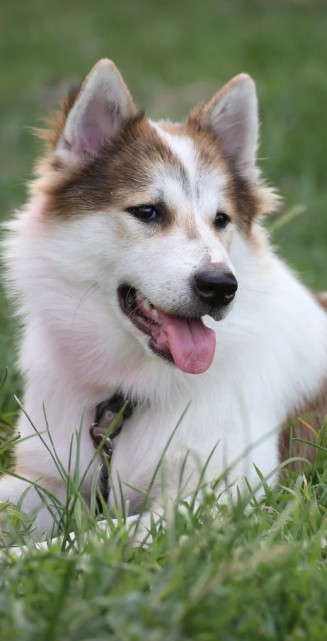
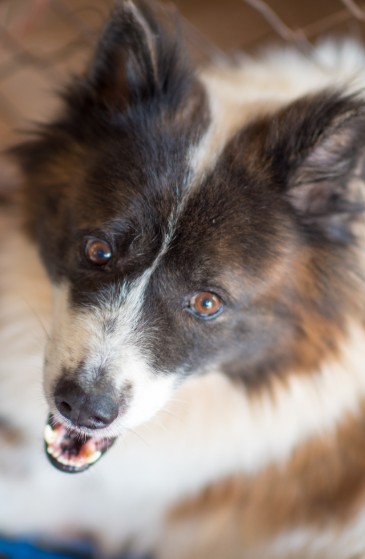
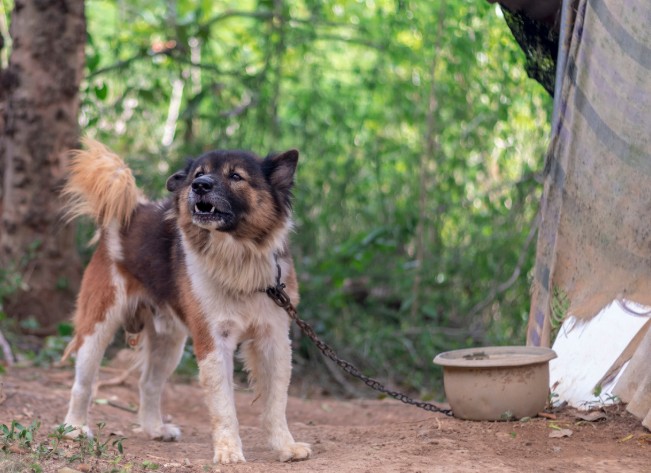
Heritage shapes the mind. Born from a rare domestic–wild union, the Bangkaew carries an independent streak that demands thoughtful training. When guided with consistency, their intelligence becomes a force for partnership rather than conflict.
Supporting That Magnificent Double Coat
The Thai Bangkaew’s water-repellent double coat is one of their most striking features, but maintaining its health requires nutritional support from the inside out. Omega-3 fatty acids become your coat care foundation – aim for about 1000mg per 30 pounds of body weight, typically through fish oil supplementation.
You’ll notice seasonal variations in coat quality, with major shedding periods twice yearly. During these times, increasing omega fatty acid supplementation can help new coat growth come in healthy and lustrous. Biotin, zinc, and vitamin E all play supporting roles in maintaining that beautiful coat your Bangkaew is known for.
The tropical origins of the breed mean they’re adapted to humid conditions, but this can also increase susceptibility to skin issues if nutrition isn’t optimal. Regular brushing combined with proper nutrition creates a synergistic effect – external care removing dead hair and stimulating circulation while internal nutrition provides the building blocks for healthy skin and coat.
Life Stage Nutrition: From Puppy to Senior
Your Thai Bangkaew’s nutritional needs evolve significantly throughout their life. Puppies require nutrient-dense foods with higher calorie content to support their rapid growth. You’ll feed 4-6 small meals daily initially, gradually reducing to twice-daily feeding by adulthood.
The adult years, from age 1-7, focus on maintenance and optimization. This is when you’ll establish feeding routines that prevent obesity while maintaining energy for their active lifestyle. Urban Bangkaews typically need 10-20% fewer calories than their rural counterparts due to reduced activity levels – adjust accordingly based on your dog’s actual exercise routine.
Senior Nutrition Considerations (8+ years):
- Joint support becomes crucial – glucosamine and chondroitin supplements help maintain mobility
- Calorie reduction of 20-30% prevents age-related weight gain
- Increased fiber aids digestion as metabolism slows
- Antioxidants support cognitive function in aging dogs
- Omega-3s provide anti-inflammatory benefits for aging joints
Health Considerations: Proactive Care for Your Bangkaew
Understanding Structural Health Risks
Hip and elbow dysplasia represent the primary structural concerns for Thai Bangkaews. While not as prevalent as in some larger breeds, the risk remains significant enough to warrant attention. You’ll want to ensure any puppy you consider comes from parents with appropriate health clearances.
Managing these risks starts early. Controlling your puppy’s growth rate through appropriate nutrition prevents the rapid development that can exacerbate joint problems. Avoid the temptation to overfeed – a slightly lean puppy grows into a healthier adult than an overweight one.
Exercise during the growth phase requires careful consideration. While your young Bangkaew may seem capable of endless activity, repetitive high-impact exercise can damage developing joints. Think varied, moderate activity rather than long runs or excessive jumping until your dog reaches skeletal maturity around 12-18 months.
Skin and Coat Health Management
The tropical climate that shaped the Thai Bangkaew also created certain dermatological susceptibilities. High humidity can lead to hot spots, particularly in areas where moisture gets trapped in the dense undercoat. You might notice your dog developing irritated patches, especially during rainy seasons.
Preventing skin issues requires a multi-faceted approach:
- Weekly brushing minimum, increasing during shedding seasons
- Thorough drying after swimming or bathing
- Regular ear cleaning to prevent infections
- Monitoring for early signs of fungal infections
- Using appropriate, mild shampoos that don’t strip natural oils
Ear infections deserve special mention as a known breed susceptibility. The Bangkaew’s ears can trap moisture and debris, creating perfect conditions for bacterial or yeast overgrowth. Weekly ear checks and cleaning become part of your routine health maintenance.
Maximizing Longevity Through Preventive Care
With proper care, your Thai Bangkaew can enjoy 10-12 years of active life, with some individuals reaching 14 years. This relatively good longevity for a medium-large breed reflects their hardy constitution and pure genetic pool.
Annual veterinary examinations catch problems early when they’re most treatable. Blood work for senior dogs helps identify metabolic changes before symptoms appear. Dental care, often overlooked, significantly impacts overall health – bacteria from periodontal disease can affect heart and kidney function.
Mental stimulation remains crucial throughout life. An engaged, mentally active Bangkaew ages better than one who becomes sedentary. Even senior dogs benefit from puzzle toys, training sessions, and environmental enrichment that keeps their remarkable intelligence sharp.

Lifestyle Integration: Making It Work
Meeting Exercise Demands in Modern Life
Your Thai Bangkaew requires 60-90 minutes of exercise daily at minimum, with 1.5-2 hours being ideal. This isn’t casual walking – these dogs need vigorous activity that challenges them physically and mentally. You’re looking at covering about 12 miles per week through various activities.
Urban owners face particular challenges meeting these needs. Without a large property to patrol, you’ll need to create exercise opportunities. Early morning runs, evening hiking, weekend adventure outings – your schedule must accommodate your dog’s needs. Dog sports like agility or scent work can provide both physical and mental stimulation in limited spaces.
Creative Exercise Solutions:
- Swimming provides excellent full-body workout and cooling
- Hiking satisfies their desire to explore territory
- Fetch games with puzzle elements add mental challenges
- Scent work utilizes their hunting instincts positively
- Agility training combines physical and mental exercise
The consequences of insufficient exercise go beyond simple restlessness. An under-exercised Bangkaew becomes destructive, possibly aggressive, and certainly unhappy. That beautiful garden you’re proud of? Your bored Bangkaew will redesign it with excavations. The peaceful relationship with neighbors? Excessive barking from a frustrated dog will strain it.
Creating the Right Environment
The ideal environment for a Thai Bangkaew includes a securely fenced property where they can patrol and fulfill their guardian instincts. Rural settings naturally suit these dogs, providing space, stimulation, and appropriate outlets for their working drives.
Urban environments demand more from both dog and owner. Every walk becomes a training opportunity as you navigate encounters with strangers and other dogs. You’ll need to identify quiet walking routes and times when foot traffic is lighter. The close proximity of neighbors means managing your dog’s protective barking becomes essential for maintaining peace.
Your home itself needs Bangkaew-proofing. These intelligent dogs figure out gate latches, test fence weaknesses, and explore every possible escape route. Six-foot fencing is minimum, and even then, some individuals may climb or dig under if motivated. Double-gate systems prevent door-darting, and secure locks keep your clever companion from letting themselves out for unauthorized adventures.
Family Dynamics and Child Safety
The relationship between Thai Bangkaews and children requires careful consideration and constant management. While these dogs can be gentle and protective with family children they’re raised alongside, their dominant nature and size present risks that can’t be ignored.
Your Bangkaew may view young children as subordinate pack members, leading to dominant behaviors that range from pushing past them to resource guarding. Children’s quick movements and high-pitched voices can trigger prey drive or protective responses. Even well-socialized Bangkaews require supervision around children.
For families with children over 10, success becomes more likely. Older children can learn to respect the dog’s space, participate in training, and understand the rules of interaction. You’ll need to teach both dog and children appropriate boundaries and never leave them unsupervised regardless of how well they seem to get along.
The protective instinct that makes Bangkaews excellent guardians can backfire with children’s friends. Your dog may not distinguish between rough play and genuine threat, potentially intervening when children are simply being children. This reality must factor into your decision about whether this breed suits your family situation.
The Owner’s Journey: Commitment and Rewards
Assessing Your Readiness
Bringing a Thai Bangkaew into your life requires honest self-assessment. These dogs don’t just need an owner – they need a leader, trainer, exercise partner, and lifelong student of canine behavior. Your previous experience with dogs matters less than your experience with dominant, independent breeds.
Essential Owner Qualities:
- Physical strength and stamina for daily exercise requirements
- Confidence to establish and maintain leadership
- Patience for training an independent thinker
- Time availability of 2-3 hours daily for exercise and interaction
- Financial resources for quality food, healthcare, and secure fencing
- Commitment to ongoing socialization and training
You’ll face challenges that casual dog owners never encounter. Your friends might not understand why their friendly approach makes your dog suspicious. Other dog owners at the park may judge you for keeping your distance. Family members might question why you can’t just “train the aggression out.” You need thick skin and unwavering commitment to your dog’s needs over social convenience.
The Daily Reality
Your typical day with a Thai Bangkaew starts early. These dogs often wake with the sun, ready for their morning patrol of the property. You’ll provide breakfast, followed by a substantial exercise session – perhaps a run or lengthy walk. Mental stimulation through training or puzzle toys fills mid-day hours.
Evening brings another exercise opportunity, possibly combined with training practice. Grooming sessions several times weekly maintain that beautiful coat and provide bonding time. You’ll spend considerable time managing your environment – checking fences, securing gates, and ensuring your property remains Bangkaew-proof.
Socialization remains ongoing. Every delivery person, every visitor, every encounter on walks becomes a training opportunity. You’re constantly balancing your dog’s natural protective instincts with the needs of modern society. Some days will frustrate you when your intelligent companion decides your commands are merely suggestions.
The Unique Rewards
Yet for the right owner, a Thai Bangkaew offers rewards no other breed can match. The bond you’ll form with these dogs goes beyond typical pet ownership – it’s a partnership built on mutual respect and understanding. Your Bangkaew’s loyalty is absolute; they would face any danger to protect you.
The intelligence that challenges you during training amazes you in daily life. You’ll watch your dog solve problems, make decisions, and demonstrate reasoning abilities that remind you of their wild heritage. Their independent nature means that when they choose to show affection, it feels earned rather than given freely.
Living with a Thai Bangkaew connects you to something ancient and authentic. In a world of designer dogs bred for appearance, your Bangkaew carries the DNA of wild jackals, the heritage of Thai villages, and the spirit of guardians who protected temples and homes for generations. You’re not just owning a dog – you’re stewarding a living piece of history.
Conclusion: Is the Thai Bangkaew Right for You?
The Thai Bangkaew Dog stands apart in the canine world, a breed that defies easy categorization or casual ownership. These remarkable dogs, with their wild jackal ancestry and fierce devotion, offer an ownership experience unlike any other. But that experience demands more from you than most breeds ever will.
If you’re seeking a casual family pet, a dog for your children to grow up with, or a friendly companion who loves everyone they meet, the Thai Bangkaew isn’t for you. These dogs require experienced handling, extensive exercise, ongoing training, and careful management throughout their lives. They challenge you daily, test boundaries regularly, and never quite let you forget their wild heritage.
But if you’re an experienced dog owner who understands dominant breeds, lives an active lifestyle, and seeks a loyal guardian rather than a social butterfly, the Thai Bangkaew might be your perfect match. You’ll need physical capability, mental resilience, and unwavering commitment. You’ll sacrifice convenience for the privilege of partnering with one of the world’s most unique breeds.
The decision to bring a Thai Bangkaew into your life shouldn’t be made lightly. Research breeders carefully, ensuring health testing and ethical practices. Prepare your property with secure fencing and your schedule with time for extensive exercise. Steel yourself for the challenges of managing a protective, independent, and incredibly intelligent companion.
For those who can meet their needs, Thai Bangkaews offer unmatched loyalty, protection, and partnership. You’ll share your life with a dog whose ancestors ran wild in Thai forests, whose relatives guard temples and farms, and whose devotion to you will never waver. In return for your leadership and dedication, you’ll gain a guardian, a companion, and a living connection to one of the canine world’s most fascinating stories.
The Thai Bangkaew isn’t just another breed to own – it’s a legacy to uphold, a responsibility to honor, and a partnership to cherish. The question isn’t whether you want a Thai Bangkaew, but whether you’re ready for the extraordinary journey they offer. 🧡

